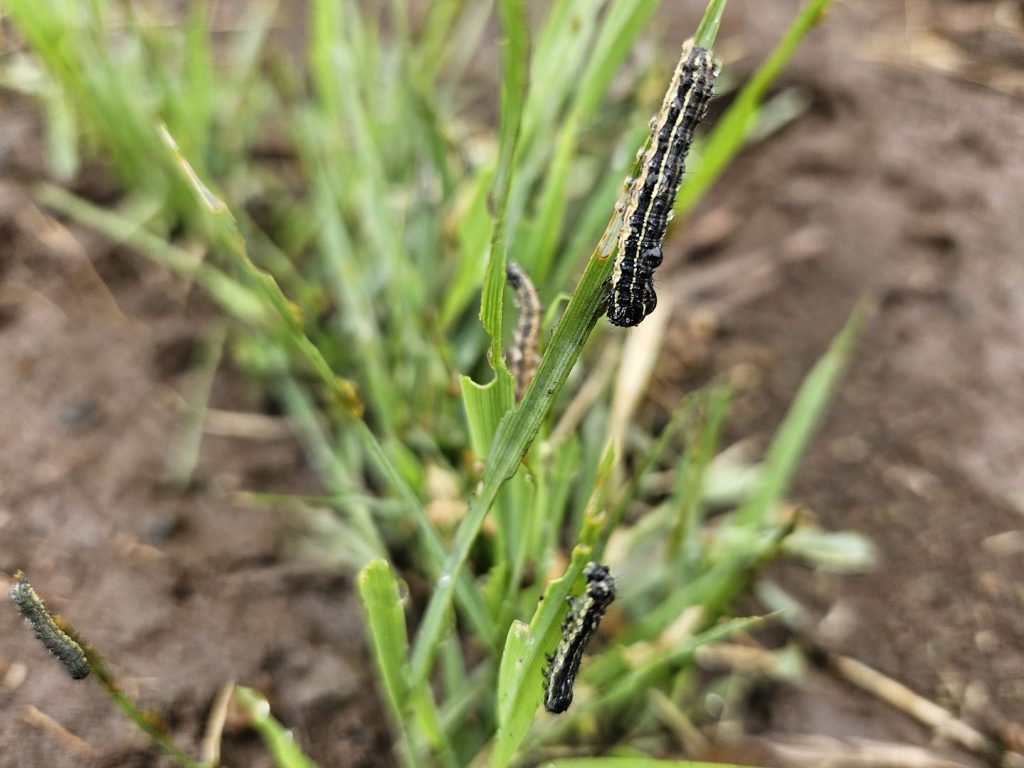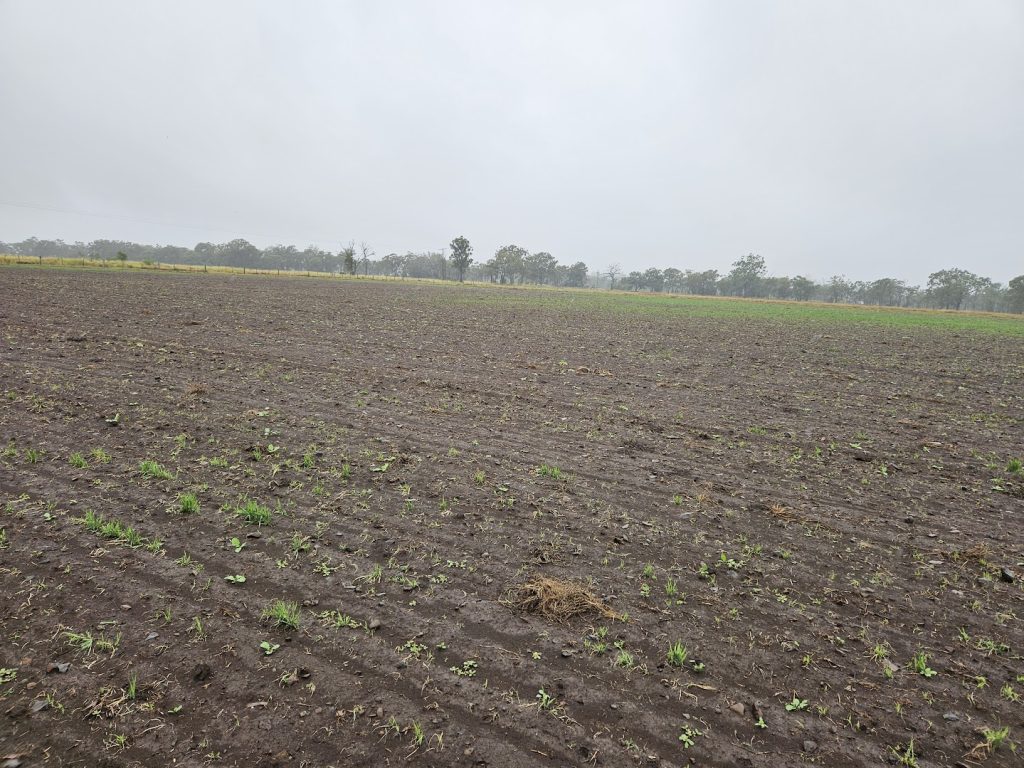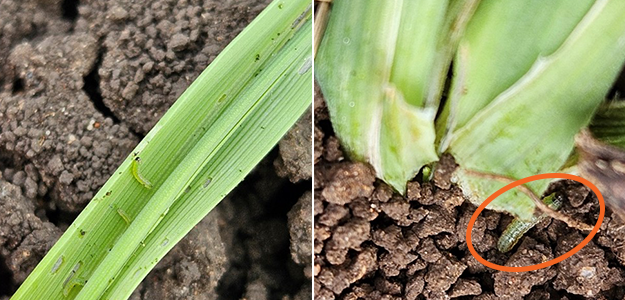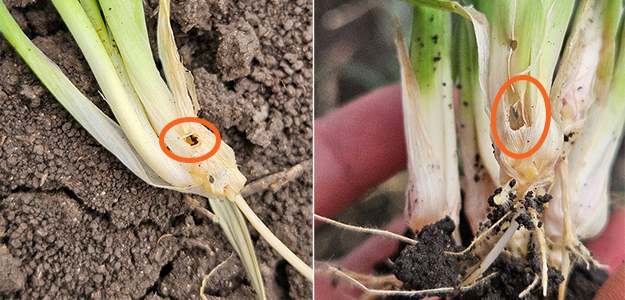QDAF entomologists have recently inspected several infestations of fall armyworm (FAW) in forage oats on the Darling Downs. Oats are not a preferred host of FAW, but these infestations come at the end of the largest FAW season since the pest arrived in Australia.
Oats are not usually inspected for pest insects, but agronomists are advised to check plants for FAW as they emerge and establish this autumn. It would also be prudent to inspect other early-sown winter cereals (wheat, barley), as the current infestations have demonstrated that FAW can not only cause substantial defoliation in oats but can severely decrease plant populations by killing small plants. Some paddocks have been significantly impacted by FAW feeding (see photos).

Fall armyworm causing substantial damage in oats

Fall armyworm infestation causing significant reduction in plant population in forage oats
Crop managers should be extra cautious where there has been nearby maize or sorghum crops over summer that may be acting as a local source of FAW moths or ‘marching’ later instar caterpillars. There may also be areas of forage sorghum or harvested sorghum and maize crops that have regrown (and will continue growing until they are killed by frost) that could be acting as a potential source of FAW infestations in oats.
Sampling and identification
As seen in other cereal crops, FAW infestations in oats have involved caterpillars residing and feeding inside the plant’s whorl. However, we have also found caterpillars, particularly larger instars, in the soil at the base of plants. Therefore, along with destructively sampling plants to investigate the presence of FAW in whorls, you should also inspect the soil at the base of plants for larvae. On warm, sunny days FAW larvae are more likely to shelter in the soil and be less obvious.

Early instar FAW larvae feeding inside oat whorls (left) and later instar FAW larva (circled) residing in soil at the base of an oat plant.
The Beatsheet has information on identifying FAW and distinguishing it from other caterpillar species.
Plant damage and sampling individual plants
FAW can defoliate the above-ground leaves of the plant, but also feed at the crown of the plant. Smaller plants are likely more susceptible to defoliation and mortality than older, larger plants.

FAW feeding damage to the crown of forage oat plants.
It is likely that forage oats are relatively tolerant of minor above ground defoliation, given they are bred for their ability to regrow from grazing via compensatory growth and tillering. However, dead plants cannot compensate, and a major risk of the current FAW infestations is reduced plant stands.
Management options
There are currently no insecticide options available to growers or agronomists as products used to control FAW in other cereal crops are not registered nor under permit in oats.
If nearby sources of FAW moths or caterpillars are identified, there may be cultural control options available, such as removing crops or grass weeds that are harbouring FAW populations.
For more information contact Trevor Volp (0429 641 912) or Melina Miles (0407 113 306).

If we plough the crop of oats outs, can we replant – will the worms reappear? Is it true that cold temperature will make the worms move on? On Darling Downs, Qld.
Just requiring any information that you are able to help with.
Many thanks